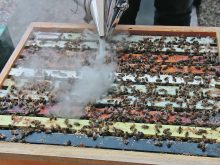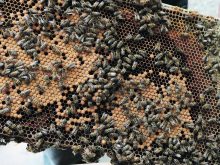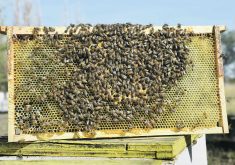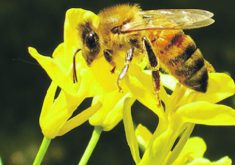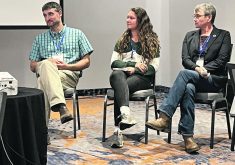Limonoids give citrus fruits their bitter taste and are also the active components in crop protection that doesn’t hurt bees
Plants have evolved ways to protect themselves using complex chemicals that can challenge even the most astute chemists.
Collaborating researchers at the John Innes Centre in Norwich, United Kingdom, and Stanford University in California recently revealed the enzymes that certain plants, such as mahogany and citrus, use to make limonoids. These molecules are the compounds that give citrus fruits their bitter taste and are also the active components in bee-friendly natural insecticides for crop protection.
Hannah Hodgson, postdoctoral fellow at the John Innes Centre, said researchers were looking at crop-protecting limonoids produced by the mahogany plant, such as asadirachtin.
Read Also

Alberta cracks down on trucking industry
Alberta transportation industry receives numerous sanctions and suspensions after crackdown investigation resulting from numerous bridge strikes and concerned calls and letters from concerned citizens
“The famous story behind this is that the neem tree, which produces azadirachtin, is the only tree in the desert to remain unplagued by locusts because of the protective effect of azadirachtin and the other limonoids it produces.”
She said azadirachtin has a complicated structure and is difficult to synthesize. Limonoids are only accessible via extraction from plant material, she added, which limits their use.
The research has shown that limonoids have evolved in just a few families of plants.
Hodgson said the structures of the limonoids vary greatly between mahogany and citrus plants.
She said the plants produce a series of enzymes and each enzyme performs a specific chemical reaction. But step-by-step, successive enzymes can turn simple chemicals into complicated, yet useful compounds such as limonoids.
She said in a news release that limonoid structures are too complicated to efficiently make by chemical synthesis. But now, with knowledge of the enzyme and the process of how they react, the biosynthetic pathway, it is possible to use a host organism to produce these compounds.
One such host plant is Nicotiana benthamiana, an Australian tobacco species often known as benth. This approach could produce more limonoids in a more sustainable way to enable the widespread use of azadirachtin, the anti-insect limonoid used in some commercial and traditional crop protection systems.
Azadirachtin is effective, fast degrading, and a bee-friendly option as an insecticide, but supply is currently limited.
In addition to pesticides, limonoids are showing value in cancer research. One compound is the limonoid known as nimbolide, which has anti-cancer drug potential.
The team has made two relatively simple limonoids: azadirone from chinaberry, a species of deciduous tree in the mahogany family, and kihadalactone A, from citrus.
“There are still quite a lot of challenges and research required to get to the point of producing commercial products,” said Hodgson. “First, we have only discovered the enzymes to make azadirone (a relatively simple limonoid and a precursor of more complicated ones such as azadirachtin).
“There is a lot more work to do to uncover the remaining pathway to crop-protecting limonoids like azadirachtin.”
As well, she said for large-scale production, yields must be maximized and that requires further engineering and optimization of the biosynthetic pathway and extraction processes.
She said that some kind of host is needed and there is a potential that a different organism such as yeast could be used.
At present, they are taking the enzymes from a native plant and putting them into a host plant, confirming that the enzymes work well.
“I find it absolutely fascinating the different chemicals that plants have evolved to make,” Hodgson said. “They are things that chemists couldn’t dream up. It makes me really appreciate how intense the evolutionary drive must be for plants to dedicate so much of their energy and resources to making these chemicals.
“Plants are sessile. They can’t move away from predators and disease. So they have had to evolve ways of protecting themselves on the spot. Hence why they produce such complicated chemicals.”
The research was published in the journal Science.




